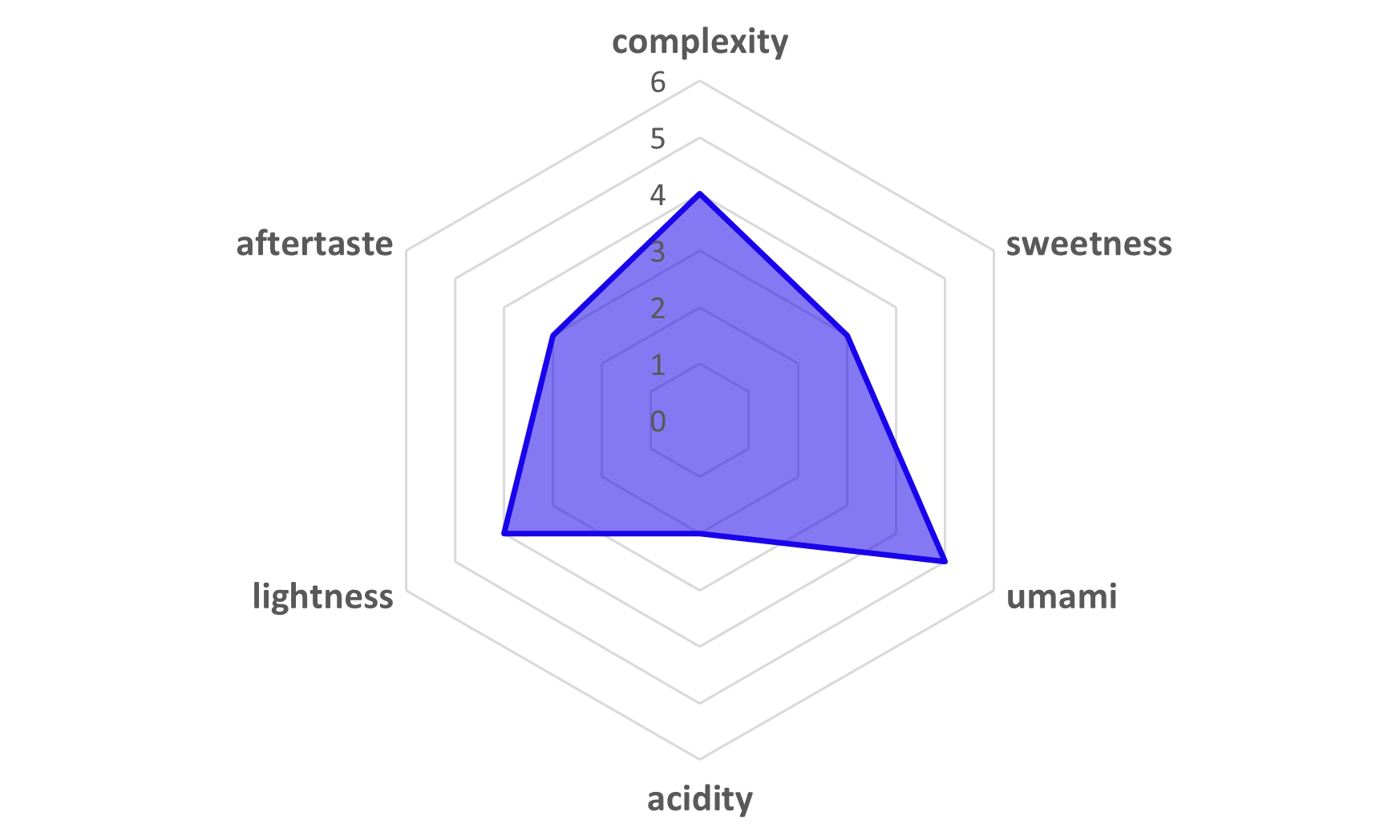N/A
An indicator of the sweetness or dryness of sake. Generally, a negative value indicates sweetness, while a positive value indicates dryness.
A numerical expression of the total amount of acidity. A high acid level indicates sharpness and richness, while a low indicates lightness and sweetness.
The ratio of rice remaining after scraping from the outside. By shaving off the surface layer, sake can be made with a distinctive aroma and free of impurities.
"In addition to herbal and butterbur-like notes, the nose has hints of mirin, burnt sweet rice crackers, dorayaki, sponge cake and sponge cake. The taste is sweet and viscous, like medicinal wine, but the sense of leaving the bottle is clean. There are also subtle hints of greenness like melon and boiled honey-like nuances. Recommended served cold."
Professional French Chief & YUKARI Special Ambassador
"The aroma is generally gentle. Based on grain-derived aromas such as cooked rice and sake lees, it is harmonised with white flowers of honeysuckle, cream cheese, iodine notes like sea breeze and savoury notes of white sesame seeds like lime. The taste is mild on the palate. The unique, rich and delicious impression gradually leads to a mellow, dry aftertaste. Can be served at temperatures of 10°C or lower, or on the rocks. We recommend using a glass with an open mouth to disperse the aroma, such as a small glass bottle opener."
Sommelier of Sake / Sake Diploma & YUKARI Special Ambassador








